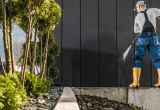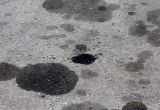
The Hidden Dangers of Mold and Mildew
In the quiet corners of our homes, lurking in the dampness of forgotten spaces, mold and mildew thrive silently. Often dismissed as a mere aesthetic nuisance, these seemingly innocuous organisms pose a much more significant threat than meets the eye. The dangers they harbor extend far beyond surface discoloration, and understanding their hidden perils is crucial for safeguarding both our homes and our health.
Health Hazards
While a patch of mold on the wall may seem harmless, the spores it releases into the air can trigger various health issues. For individuals with respiratory conditions like asthma or allergies, exposure to mold spores can exacerbate symptoms, leading to coughing, wheezing, or nasal congestion. Prolonged exposure may even prompt the development of respiratory infections.
Moreover, certain molds produce mycotoxins, toxic substances that can cause severe health problems. These toxins, when inhaled or ingested, may lead to headaches, dizziness, fatigue, and in extreme cases, neurological issues or organ damage.
Structural Damage
Beyond health concerns, mold and mildew can wreak havoc on the very structure of our homes. They feed on organic materials such as wood, drywall, and insulation, compromising their integrity over time. Infestations can weaken the structural components of a building, leading to decay, warping, and even irreversible damage. If you are in need of a foundational repair in Charleston, see All Star for your foundational repair needs.
Unseen Breeding Grounds
The insidious nature of mold lies in its ability to thrive in hidden, moisture-laden areas. Dark, damp spaces like basements, crawl spaces, attics, and bathrooms provide the ideal environment for mold growth. Often, these areas remain unchecked for extended periods, allowing mold to proliferate unnoticed until the problem becomes severe.

How Can We Help?
Preventing mold and mildew requires diligent maintenance and vigilance. Proper ventilation in high-moisture areas, prompt repairs of leaks or water damage, and regular cleaning to remove excess moisture are essential preventive measures.
-
Pressure Washing and Soft Washing: Both pressure washing and soft washing are effective techniques for cleaning surfaces. Pressure washing uses high-pressure water to remove dirt, grime, and other contaminants from surfaces, which can include areas where mold and mildew might grow, such as exterior walls, decks, or driveways. Soft washing uses a lower pressure with specialized cleaning solutions to remove mold, mildew, and other organic matter without causing damage to delicate surfaces. Regular cleaning with these methods can help prevent the buildup of substances that mold and mildew feed on.
-
Gutter Cleaning: Clogged gutters can trap water, creating a moist environment ideal for mold and mildew growth. By regularly cleaning gutters and ensuring proper drainage away from the house, you can prevent water accumulation that might lead to mold problems.
Conclusion
The hidden dangers of mold and mildew demand our attention. These seemingly inconspicuous organisms possess the potential to harm both our health and the structural integrity of our homes. Vigilance, preventive measures, and prompt action upon detection are key in mitigating the risks associated with mold infestation.
Ignoring the signs or underestimating the severity of mold and mildew can lead to dire consequences. By acknowledging their hidden perils and taking proactive steps, we can ensure healthier living spaces and protect ourselves and our homes from their insidious effects.








